Third Quarter IMLS (Institute of Museum and Library Services) Grant Update for 2024
To celebrate the completion of another six months of work on our 2022-2024 IMLS Museums for America Collections Stewardship Program, the Conservation staff are showcasing some standout objects we have conserved. We are now in the second year of a two-year project to conserve, rehouse, relocate and create fully digital catalog records for 1,800 objects related to agriculture and the environment that have resided in the Collections Storage Building. Many of these objects will be used to support our Edible Education and Green Museum initiatives.

Stop by the back of the museum, near the steam engines, to peek through the Conservation lab windows and see what staff are conserving.

The first object is a declaratory or advertising artifact for Dr. W.E. Coomer Dog and Cat Hospital, circa 1920. Dr. Ward E. Coomer (1883-1963) was a veterinarian in Bay City, Michigan.
This black sign is written in yellow paint with a green frame, and it was once attached to the building with long screws at the top and bottom of the frame. The surface of the sign has small black particles for the background that were flaking off in several areas. Broken glass pieces were stuck at the lower right corner of the frame, likely remnants of former glazing.
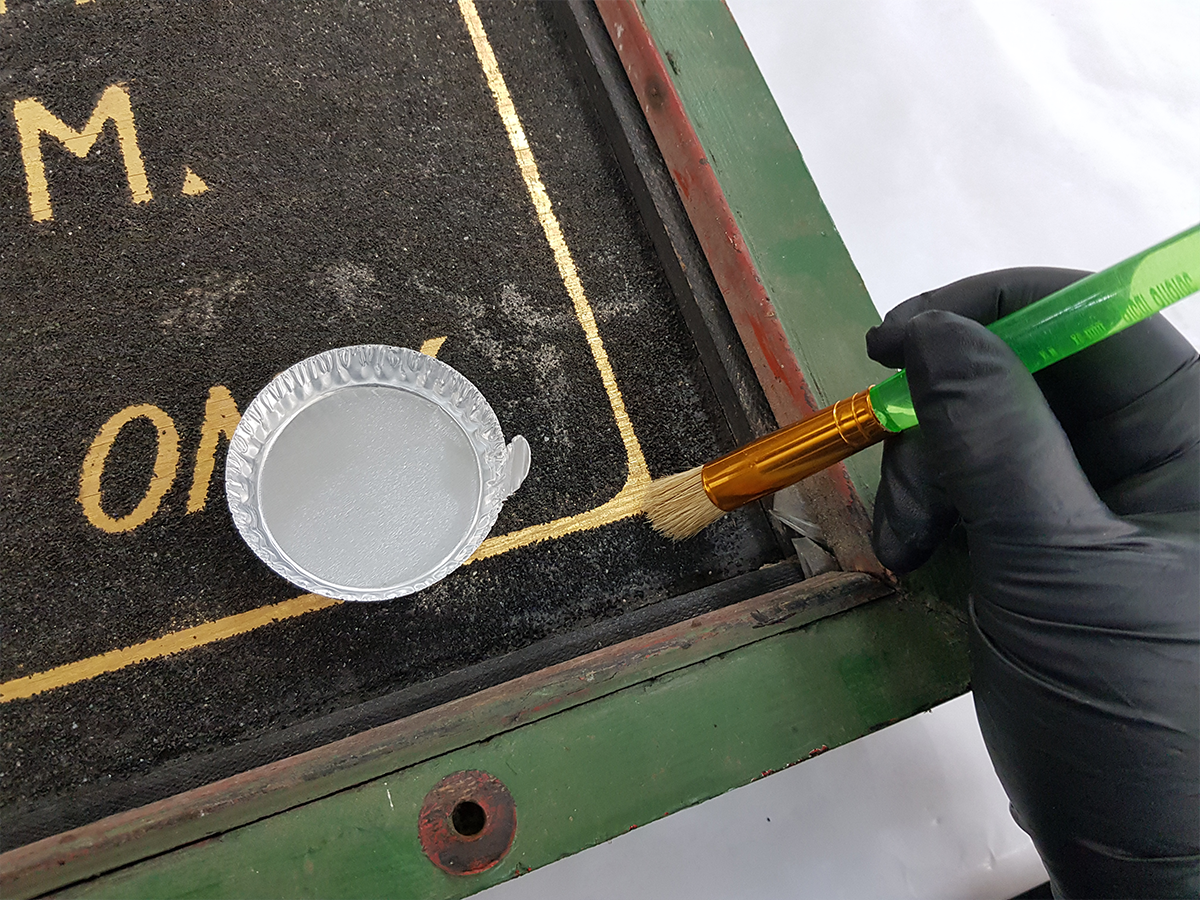
The object's overall surface was cleaned with a HEPA vacuum, and the wooden surfaces were cleaned with distilled water. The black particles that were falling off were fixed in place with a solution containing the acrylic resin Paraloid B-72. Tannic acid solution was then applied to prevent further rusting of the metal components.
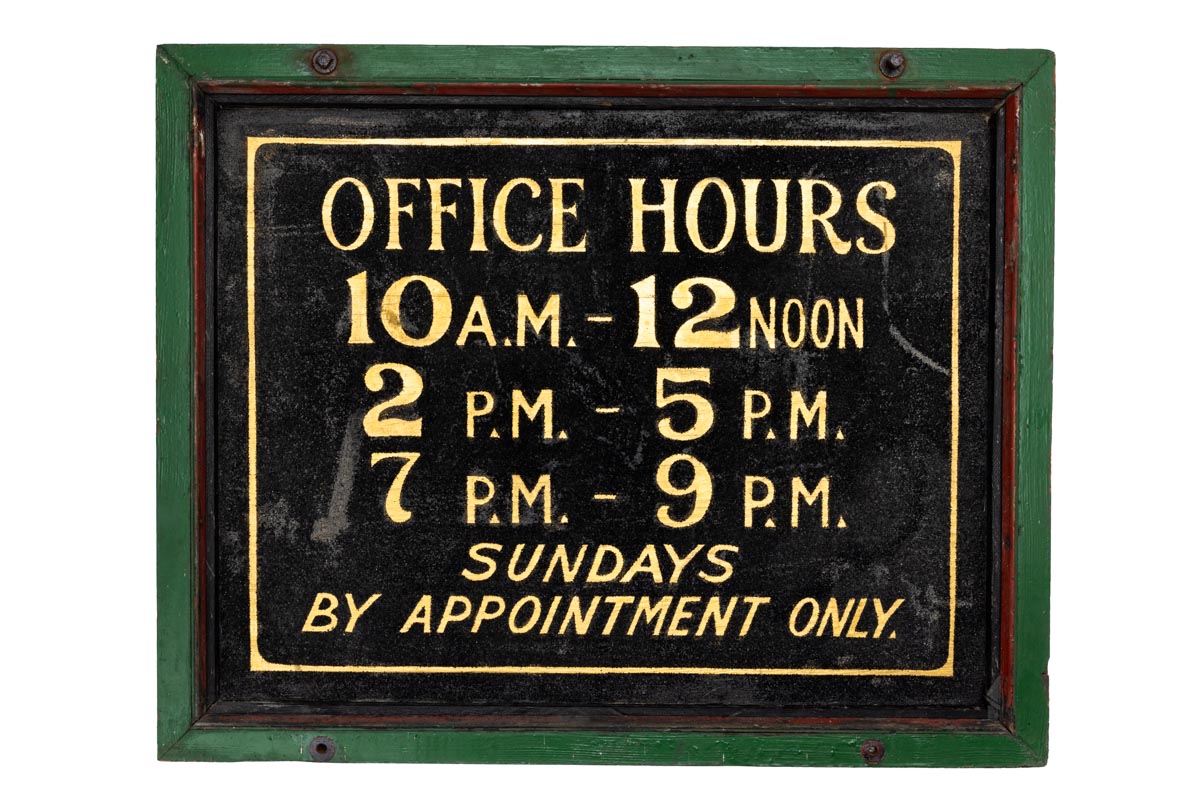
After cleaning, the wooden frame’s green and red paint stands out. The stabilization of materials during the conservation treatment will allow the sign’s information to remain for years to come.
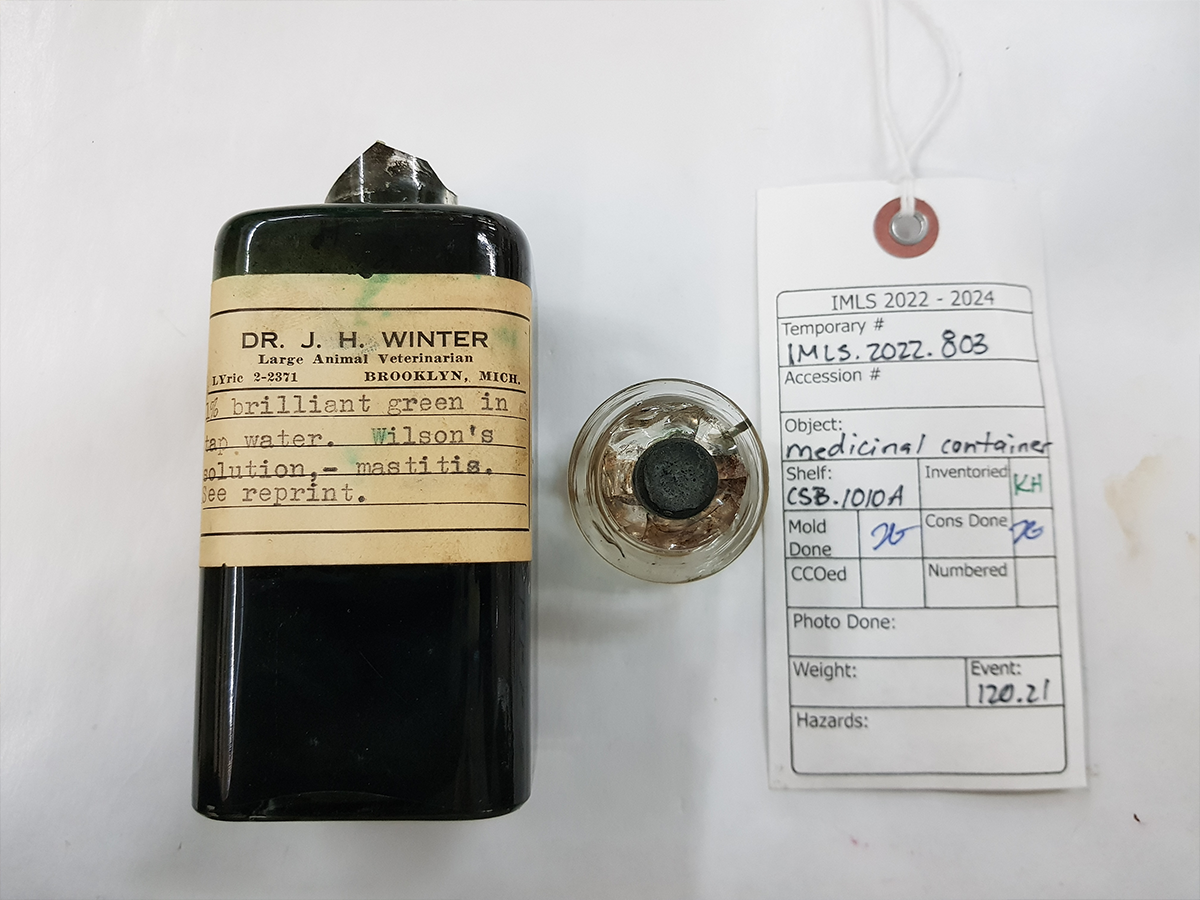
This glass medicinal container with a transparent glass lid was filled with a liquid labeled as "1% brilliant green in tap water." The lid was stuck to the container, and there was an internal cracking of glass at the bottle's neck.
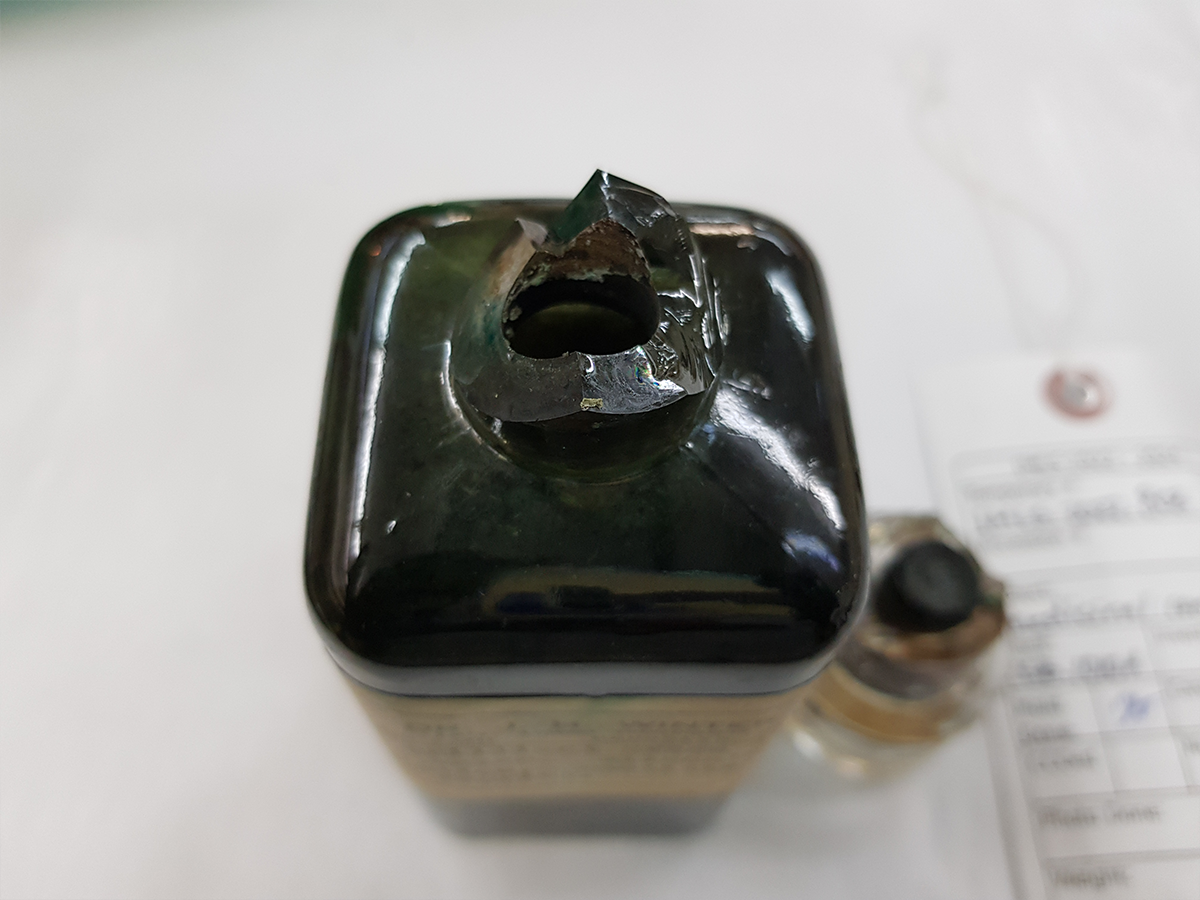
To remove the liquid, the cracked neck of the bottle was carefully opened, and the liquid was safely disposed of according to OSHA (Occupational Safety and Health Act) and EPA (Environmental Protection Agency) regulations. The glass surface was cleaned with a solution of biodegradable detergent called Orvus and rinsed with distilled water. The broken neck of the glass bottle was repaired using Paraloid B-72 adhesive.
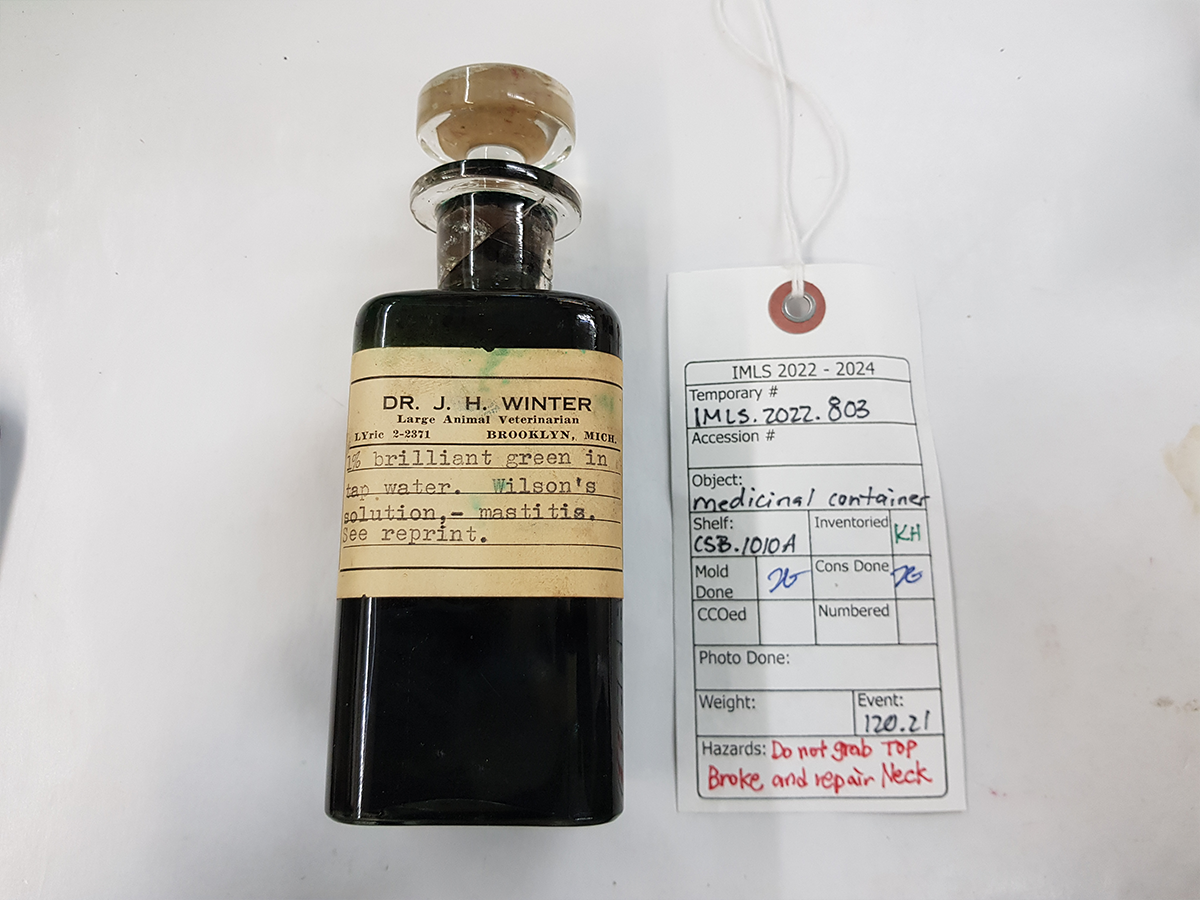
The repaired container is now clean and empty; however, remnants of residue around the lid and green stains on the label help to retain the colorful history of the bottle’s former contents.
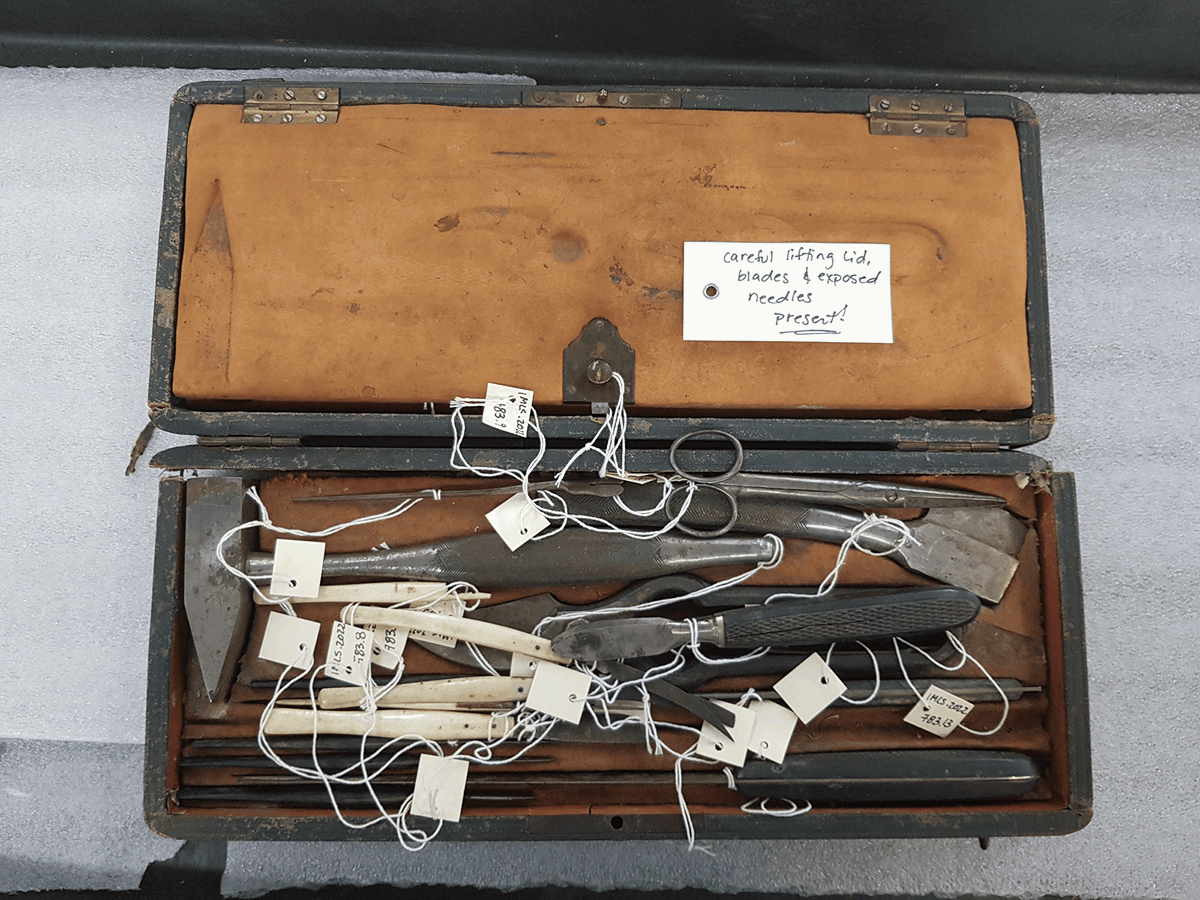
The third item is a veterinarian instrument case composed of 17 tools, including surgical blades, pliers and more. The wooden case is covered with dark green leather, but it was broken and separated into two pieces. The velvet layers inside the case were dusty, stained, torn and lifting, and worm carcasses were found between its walls . The metal tools inside were corroded — the handles of wood and plastic tools were stained and cracked.
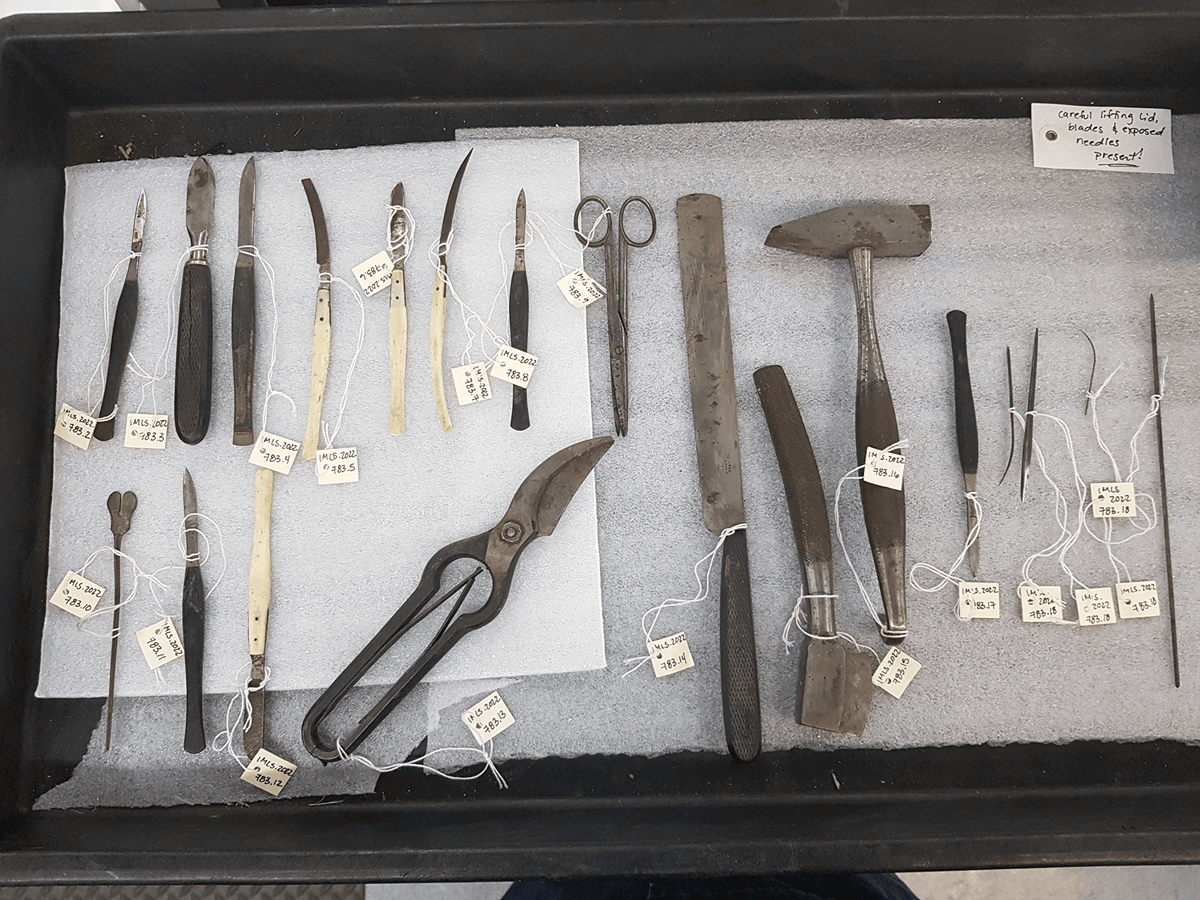
The surface of the case was cleaned with a HEPA vacuum and distilled water, while breakage was repaired using hide glue. The lifted velvet was readhered and held in place with clamps while drying. The metal tools were cleaned and coated with a tannic acid solution, which converts iron corrosion to a dark stable oxide layer, limiting additional corrosion.
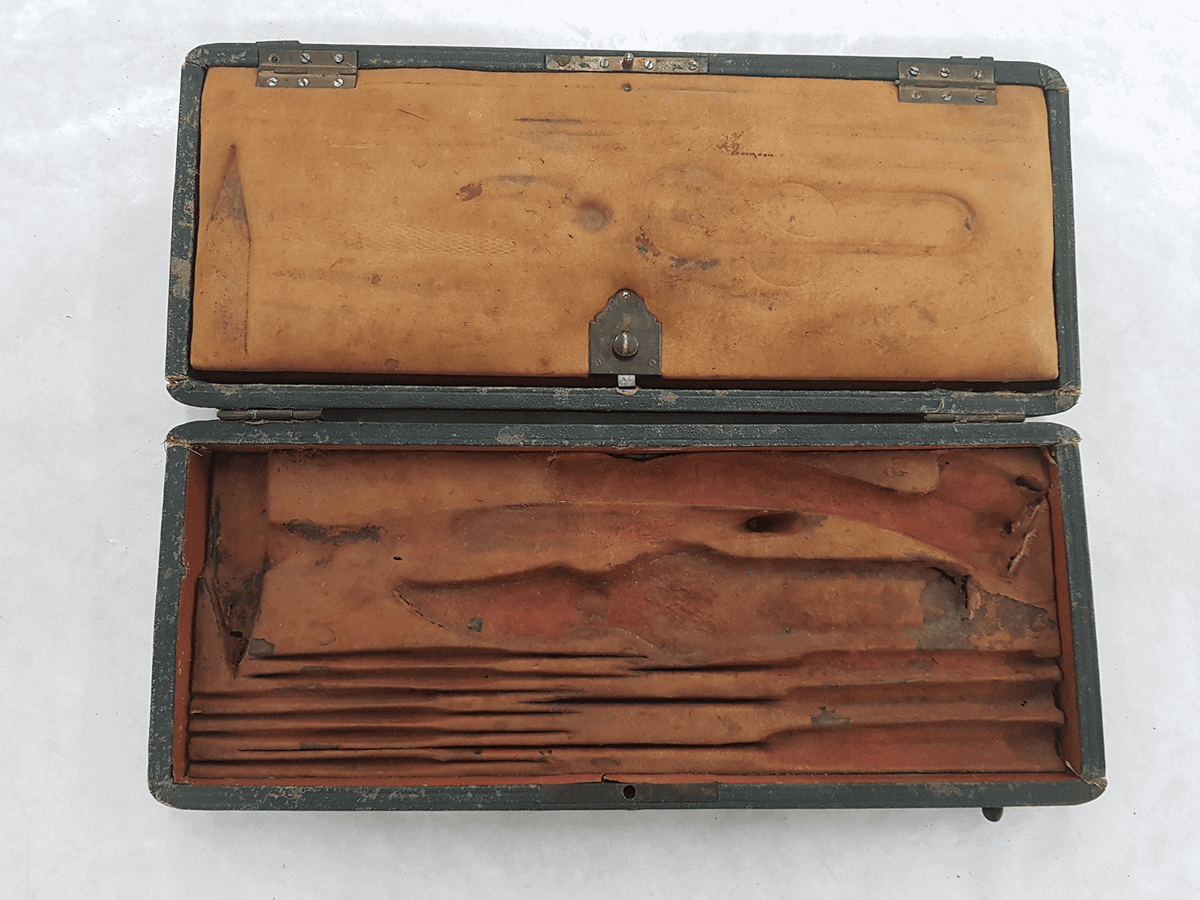
The image above shows the case after it has been repaired and cleaned. The fabric is much brighter in color. The tools will now be stored separately from the case so as not to damage the fragile fabric lining.
)
One of the fancier milk containers in The Henry Ford’s collections, this English example features a brass spigot, handles and domed lid. The cylindrical portion crowning the lid is punched with decorative ventilation holes. The body of the can tapers inward before flaring outward near the top. The brass upper portion of the can extends to the gray metal bottom, ending in a curving line just below where the handles attach. The large scale of this metal milk can implies that it would have been placed on a cart for ease of transport.
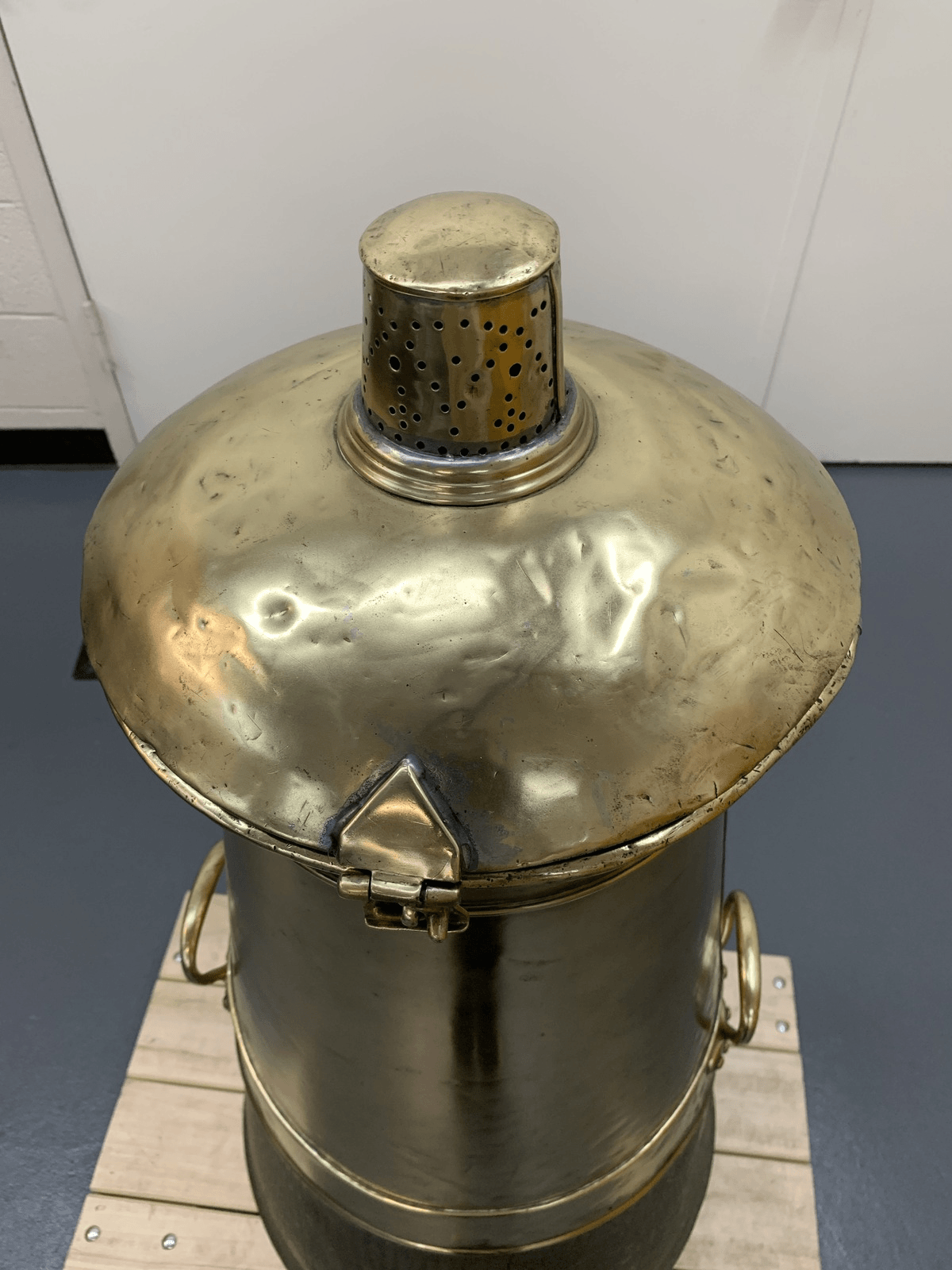
The milk can was cleaned with mineral spirits and coated with a protective wax on the lower part. The brass was polished until it was shiny before being coated with lacquer to preserve the luster.
Jee Eun Lim is IMLS project conservator at The Henry Ford. Marlene Gray, senior conservator and Julia Fahling, conservation specialist, are assisting is assisting Jee on the grant.

